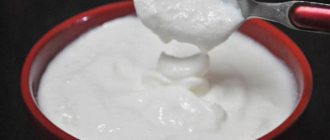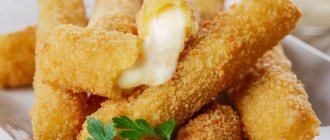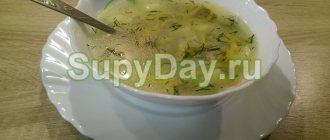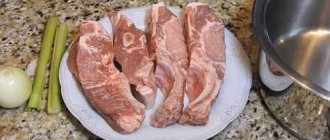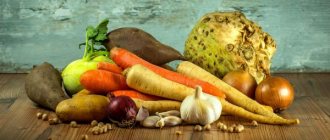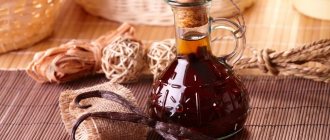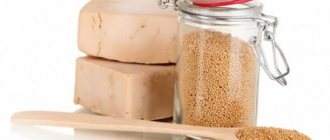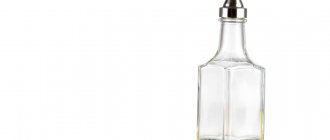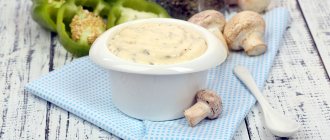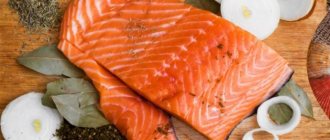What is a pressure cooker and what is it for?
A pressure cooker is a hermetically sealed pan, inside of which a pressure is created that increases the boiling point of water to 120°C. A pressure cooker is needed to cook foods that require long-term heat treatment.
The heat treatment time in the unit is reduced by 2-4 times . This speed gives an idea of how high the pressure is generated in the pressure cooker (0.98-1.04 atmospheres) and how high the temperature is in the pressure cooker (up to 120°C).
For example, peas are cooked in a pressure cooker for 15 minutes, not 90, as in a regular saucepan. The jellied meat is cooked for 30 minutes instead of 3 hours. This kitchen utensil is indispensable for residents of mountainous areas, where atmospheric pressure is low and, as a result, the temperature at which water boils decreases.
How to cook in a pressure cooker?
Make sure that your appliance is in good working order and intact, and that there are no foreign objects between the bowl and the heating element. If everything is in order, start cooking:
- Pour the required amount of liquid into the pressure cooker bowl and add the food.
- Place the bowl in the appliance and close the lid. Make sure the pressure relief valve is in the correct position. Multicookers with a pressure cooker function can cook with the lid open or closed - choose the position depending on the recipe.
- Plug in the pressure cooker and select the appropriate program. If necessary, change the cooking time and, if the mode allows it, the temperature. Click "Start" and wait until the program finishes.
- Relieving pressure is also an important part of the cooking process. There are 2 ways to do this in an electric pressure cooker. The first is to wait until the pressure drops on its own as the device cools. The second is to open the valve on the lid and quickly release the steam. The natural pressure drop will take from 5 to 20 minutes. This method is perfect for stewed meat or beans: they will become even tastier. But vegetables and grain porridges run the risk of being overcooked in a few minutes - for them a quick way to relieve pressure is more appropriate.
There are a few tricks to remember when cooking in a pressure cooker:
- Juicy foods can be prepared without adding oil and water. This will significantly increase their benefits and taste.
- The water in the pressure cooker practically does not evaporate, so there is no need to pour it “too much”. And if you cook porridge, you need half as much water as usual.
- Water should occupy no more than 2/3 of the volume of the pressure cooker bowl, and if these are products prone to swelling, no more than 1/2.
- Cook under pressure - you won't be able to open the lid. Therefore, all ingredients and spices must be added at the same time. To even out the cooking time for different products, cut them into pieces of different sizes: what cooks faster is larger, and what requires a long heat treatment is smaller.
- If you still need to open the lid, do not forget to release the pressure through the valve first.
- Frozen foods can be cooked without first defrosting if they are cleaned, gutted, and washed in advance.
- Meat can be put into the pressure cooker in large pieces, and vegetables - whole.
- It is better to add spices in smaller quantities, since they are more noticeable, and the food’s own aroma remains brighter.
How does a pressure cooker work?
The pressure cooker includes : a container, a lid, a rubber or silicone seal, a working and emergency valve for releasing pressure, and a stand for steaming. Modern expensive models are equipped with a pressure sensor, timer, thermometer, and a set of programs.
The device is a metal pan that is hermetically sealed with a lid . The seal between the lid and the pan is usually made of heat-resistant rubber. The lid is pressed to the pan by a spring bar that snaps into place with a lock. There are also designs in which the lid is inserted into the pan and fixed there by internal pressure.
A working valve is built into the lid ; it ensures that excess steam is released when the pressure rises. For safety, the unit is equipped with one or more emergency valves - they open if the internal pressure exceeds the value specified by the manufacturer. The emergency valve also operates to relieve pressure if the service valve becomes clogged or broken.
There are also electric pressure cookers, in which the pan is combined with an electric heater . In such models, pressure sensors are used, as well as controlled valves - they ensure the maintenance of a given pressure and temperature while saving energy.
It can be useful:
How to use a multicooker
How to use a ham maker
How to use a yogurt maker
Advantages of pressure cookers:
- cooking time is shorter;
- energy consumption is lower as cooking time is reduced;
- rapid release of pressure creates the effect of an “internal explosion” and sharply softens hard products;
- preserves vitamins better, because the pressure inside is created by water vapor.
Flaws:
- during the cooking process it is impossible to assess the degree of readiness of dishes;
- opening the valves on a hot pressure cooker can result in the release of scalding splashes and foam;
- a pressure cooker is larger in size than a regular saucepan of the same usable capacity;
- clogged valves can cause the pan to explode.
How does it work
There are two types of devices - for cooking on gas and powered by electricity. They work like this: pressure increases under the lid, which significantly reduces cooking time.
An important design element is a sealed lid with a safety valve. Fixation between it and the container is ensured by special clamps from the outside and inside. They can be spring, screw or bayonet. The lid is equipped with a sealed elastic gasket.
How to use an old style pressure cooker
An old-style pressure cooker of the “Minute” type is used on gas. Before each use, wash it thoroughly, especially if it has not been used for a long time. It is recommended to study the instructions for the pressure cooker and also check the integrity of the sealing ring, since if it is damaged, steam will escape from under the lid.
Important! A pressure cooker made in the USSR should not be stored with the lid closed - this can lead to deformation of the sealing ring. The lid is not dishwasher safe - strong chemicals may damage the sealing ring.
Adding food and adding water
The dishes are filled with food and water no more than 3/4 full . If you fill it completely, the valves may become clogged and break during boiling. Products that are steamed are placed on a special grid included with the pressure cooker.
Preparing to use the pressure cooker includes:
- placing the pan on the neck;
- moving the valve under the rocker arm, its ends under the bracket flanges;
- turn the locking handle 2-2.5 turns.
Algorithm for working with a pressure cooker:
- Setting the operating valve to the desired temperature.
- Place the pressure cooker on the stove and heat it until the contents boil.
- Reduce the heat intensity of the pan.
- Remove the pan from the heat after cooking.
The instruction manual states that the finished dish is cooled (until the hissing of steam coming out of the valve stops) by periodically opening the operating valve or under ice water, which is poured onto the body. The user should not have any problems with how to open or close the pan, however, the manufacturer recommends not to apply excessive force to these processes.
Using a pressure cooker
We'll tell you how to use this useful device correctly.
Preparing for first use
Before using a pressure cooker, be sure to read the instructions for it, as well as the recommendations of the manufacturer .
A new pan should be rinsed and dried .
Advice . First of all, without covering the pressure cooker with a lid, it is recommended to boil the milk in it.
If the surface is not protected with a special coating, then this simple method will keep it from darkening.
Rules for cooking in a pressure cooker
A pressure cooker requires more careful handling than the frying pans that many people are accustomed to.
Be sure to follow these guidelines .
- An empty pressure cooker cannot be put on gas . It must contain at least two glasses of liquid.
- It is not advisable to completely fill the pan with liquid , i.e. there should be space left in it.
- There is almost no evaporation in it . If you need to cook several servings of soup or broth, then pour a sufficient amount of liquid into it.
- Filling with ingredients should not exceed 2⁄3 of the pan's volume.
- If you need to cook rice, beans and other dry foods that tend to swell during cooking, fill the pan only halfway with water .
- It is prohibited to place this device in a microwave or oven . A separate type of cookware is used for them.
- The set includes a special stand that allows you to simmer foods with minimal use of liquid , as well as steam them.
- Can be used as a regular saucepan using a glass lid.
- Do not place the lid in water or in a dishwashing machine..
- The seal, pressure adjustment valve, and other components are washed separately . This is quite easy to do immediately after the cooking process.
- When preparing meat dishes, the water to a boil, then remove the foam and only then close the lid.
- To avoid contamination, it is not recommended to keep food in it . Immediately after the process is completed, the food is transferred to a pre-prepared container.
Important! A pressure cooker is used for cooking; it cannot be used for frying foods under pressure.
If, for example, the recipe calls for frying vegetables, then first sauté them with the lid open, and only then add the remaining ingredients and pour in the liquid. Next, close the lid and cook under pressure.
How to use the new pressure cooker
A modern unit is an electrical appliance that does not require a kitchen stove - gas or electric. Heating occurs using a built-in heating element. We'll tell you how to cook in such a pressure cooker.
Modern models are often equipped with an intelligent cooking function and are already equipped with a number of recipe programs; to activate them, just press the corresponding button on the control panel.
The rule of filling a pan 3/4 applies to all types of quick-cooking pans - both old Soviet and modern ones. Products that are steamed are placed on a special grill included in the kit.
Preparation for work includes:
- checking the unit bowl for cracks or chips;
- placing a clean bowl into the cavity of an electric pan;
- filling with water;
- display of products.
Work algorithm:
- Setting the operating temperature.
- Select a recipe if the pan has an intelligent cooking function.
- Setting the cooking timer or delayed start timer, if necessary.
- Clicking the "Start" button.
- Turning off the electric pan after the dish is ready. This action is not necessary, because after completing the cooking program, the unit turns off and goes into mode to maintain the temperature of the finished dish.
There is no need to cool the pan ; the lid can be opened immediately after finishing cooking.
What foods can be cooked + temporary table
You can cook anything in a pressure cooker. More precisely, almost everything. The list of “prohibited” products includes those whose cooking is accompanied by a large amount of foam and splashes - this can clog the valve from the inside. These include pearl barley, oatmeal, semolina, millet, crushed peas, noodles, spaghetti, and compotes. However, even in this case, a pressure cooker can be used, namely, to use it as a standard saucepan.
What can you cook in a pressure cooker with a clear conscience? Soups, vegetables, rice, cereals, meat, fish, desserts and side dishes. And if specifically according to the recipes, then quick pilaf, cabbage rolls, roasts, spaghetti, jellied meat, stewed cabbage, vegetable stew, borscht, pies and puddings.
Below are the cooking times for certain products.
| Product Name | Cooking time (min.) |
| Eggplant | 9-10 |
| Cauliflower | 5-7 |
| Cabbage | 3-5 |
| Beans | 5-6 |
| Stewed onions | 8-10 |
| Beans | 3-4 |
| Turnip | 9-12 |
| Young carrots | 3-5 |
| old carrot | 6-10 |
| Sliced carrots | 3-4 |
| Bell pepper | 9-10 |
| Young beets | 10-14 |
| Old beets | 20-35 |
| Jacket potatoes | 13-15 |
| Young small potatoes | 5-8 |
| Young medium potatoes | 9-10 |
| Potatoes cut into wedges | 4-6 |
| Corn (whole) | 15-20 |
| Rice | 10-12 |
| Medium size chicken | 20-30 |
| Duck | 20-25 |
| Liver | 5 |
| Fresh fish | 4-6 |
| Frozen fish | 4-5 |
| Frozen vegetables | 1-2 |
| Beef | 25-30 |
| Mutton | 15-20 |
| Pork | 20-25 |
| Groats | 18-20 |
| Peas | 10-20 |
What to cook
Meat, vegetables, fruits, berries, fish - any of these products can be successfully cooked in a pressure cooker. Dishes are prepared without the use of oil, which means they contain fewer carcinogens and other harmful compounds. This method preserves the beneficial properties of the products.
The device is convenient for preparing complex dishes , such as jellied meat. The smell spreads less than when using a frying pan or saucepan.
Garden owners use an airtight pan for home canning .
Advantages of the device
Unlike other cooking methods, quick cooking has a number of advantages:
- The cooking time for dishes is reduced several times (for example, peas, which are cooked for at least an hour, are cooked in a pressure cooker in 10-20 minutes).
- When preparing soups, meat and other dishes, the need to add water is reduced to zero, since it does not evaporate. And this makes the housewife’s work much easier.
- Vegetables and fruits retain not only their beneficial substances, but also their natural color.
- Meat from a pressure cooker has a more delicate taste and softness.
- The odor of strong-smelling products (for example, fish) is almost completely neutralized.
And most importantly, pressure cooker dishes, especially those steamed, are considered the healthiest. Therefore, if you are following a healthy diet, a pressure cooker is a must have in your kitchen.
What can you cook in a pressure cooker?
In a pressure cooker, food is cooked under the influence of moist heat - stewed, boiled, steamed. This cooking method is suitable for soups, cereals, stews, meat, legumes, risotto, polenta. Jellied meat, stew, vegetable stew, and pilaf work especially well in a slow cooker.
The list of foods prohibited for cooking in a pressure cooker includes barley, oatmeal, semolina, millet, crushed peas, noodles, compotes - in short, anything that forms foam and splashes that can clog the valve from the inside.
If the pressure cooker is integrated into a multicooker, the range of capabilities of the device expands many times over. In pressure cooking mode, such a device has all the capabilities of a pressure cooker, and without sealing it can also cook fried or baked foods.
